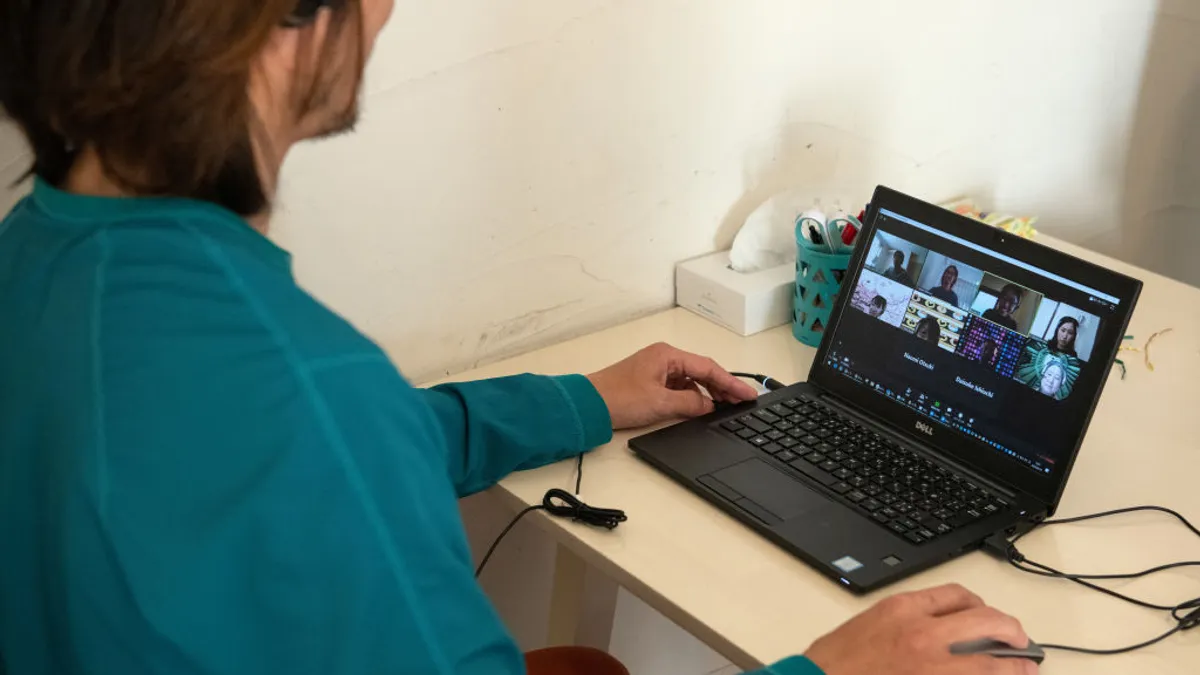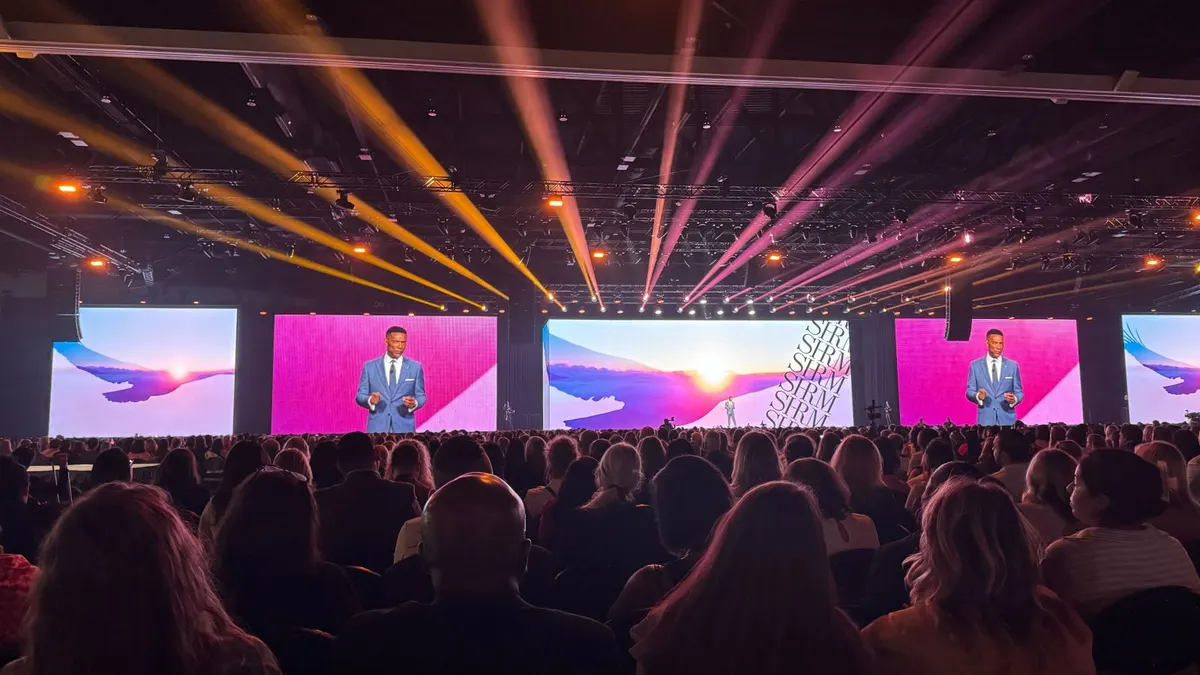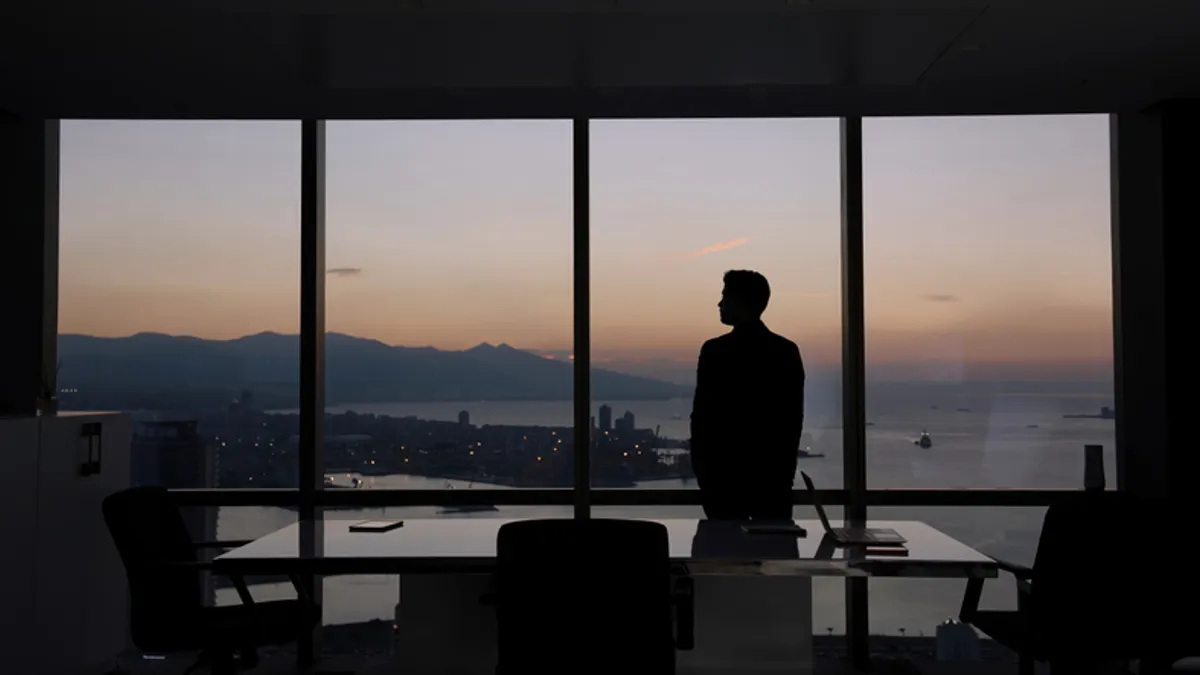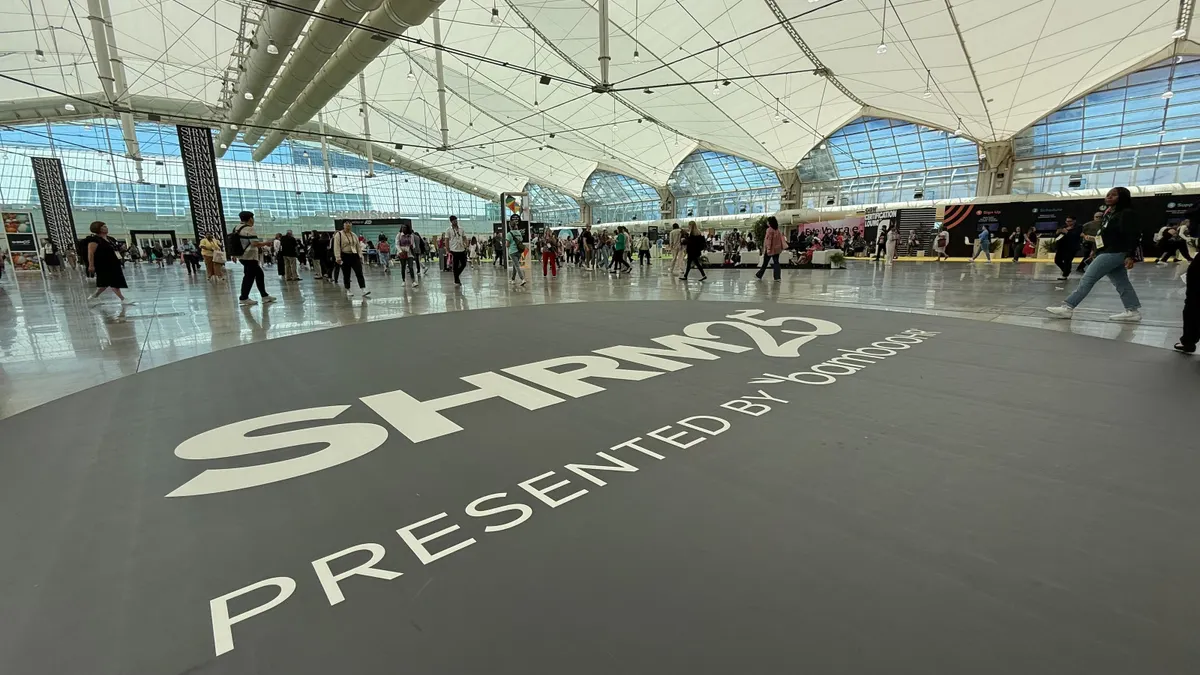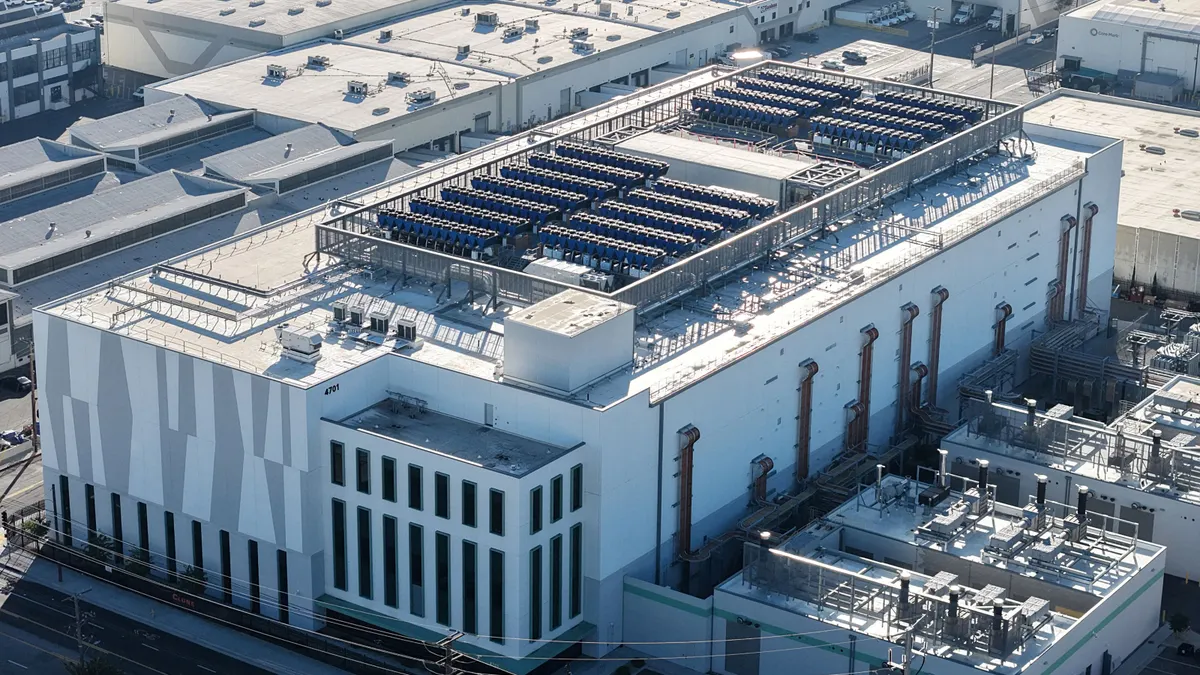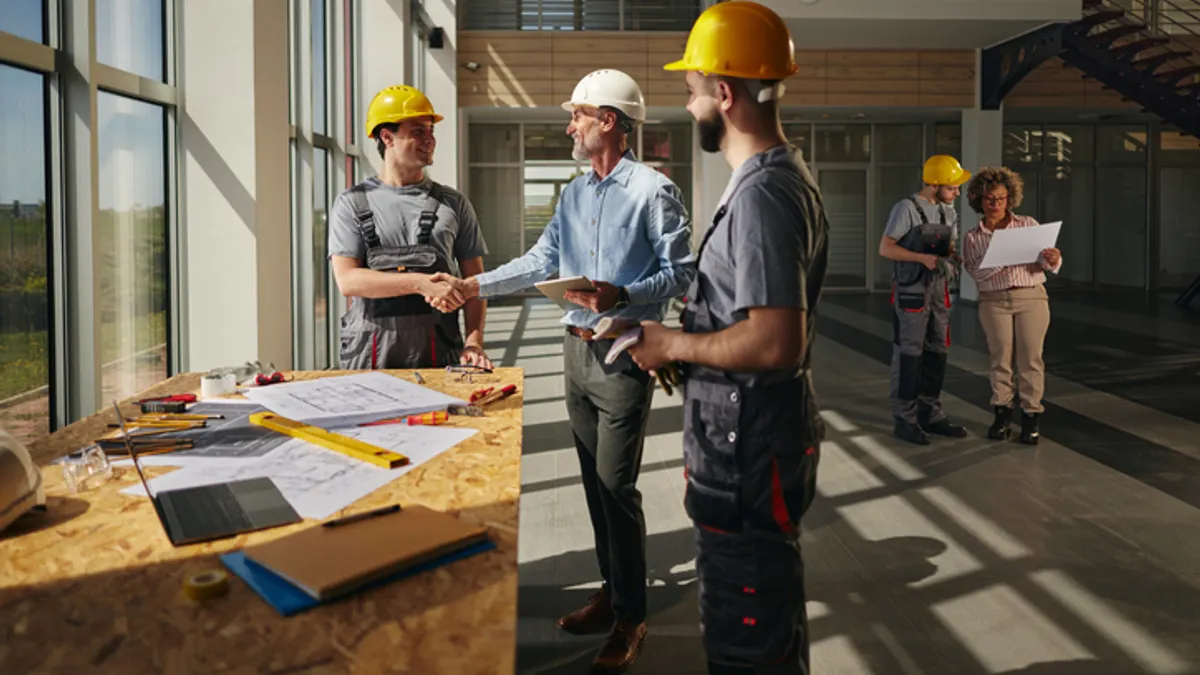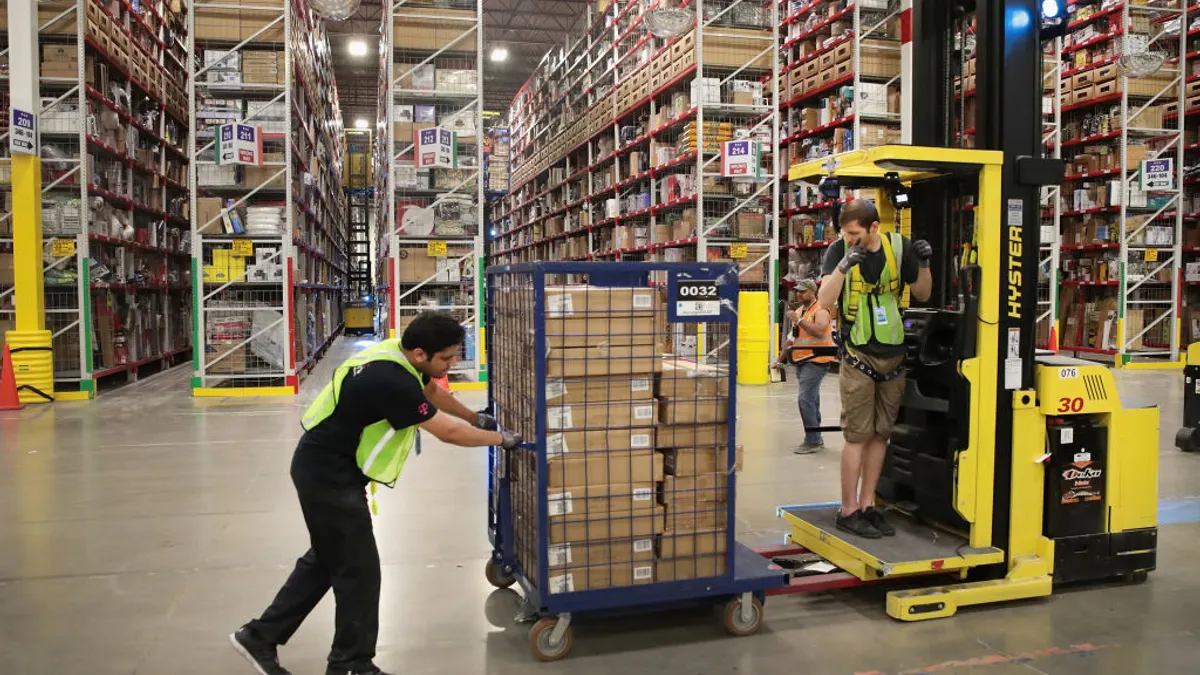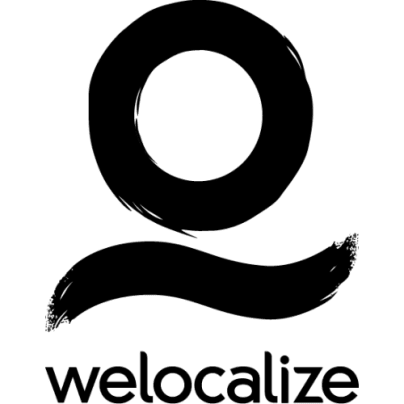As a hybrid work environment has become the norm for many employees, workers are feeling the effects of what Annie Rosencrans, people and culture director at HiBob, calls meeting hangovers.
“It's essentially the exhaustion and dissatisfaction employees are feeling from the high volume and oftentimes low efficacy or low impact of virtual meetings that are often back to back in a hybrid workplace,” Rosencrans said.
The cure? Fewer meetings — and shorter ones.
Workers are faced with a “seemingly infinite workday,” according to a June report from Microsoft, always connected to email and fielding meeting requests at all hours. Per Microsoft, evening meetings held after 8 p.m. have increased 16% year over year, and half of meetings are held between 9-11 a.m. and 1-3 p.m. — the most productive hours for workers based on their circadian rhythms.
Meeting overload is a problem amplified by virtual meetings, Rosencrans said.
“When we're in person, we have the benefit of water cooler moments, or solving problems quickly in real time without having to necessarily book a meeting, whereas when you're completely remote or hybrid, you have to be much more intentional about booking time to solve problems,” she said. “Those tendencies in a virtual environment create a higher strain on your calendar, on your work day, and that's what leads to the hangover, the meeting fatigue.”
The default often is 30 minutes or an hour, when in reality some things can be accomplished in five or 10 minutes, Rosencrans said. Even something as simple as setting the default meeting time to 45 minutes instead of an hour, or 25 minutes instead of 30 minutes, can create breaks in workers’ schedules.
“Those small, small adjustments really kind of make a big impact on the amount of work you can accomplish in the course of the day, and again, create space for you to connect with your colleagues or deal with life in between your work day,” Rosencrans said.
Employees also hopefully work in environments where they can block off periods on their calendar to grab lunch or get work done uninterrupted, she said.
Companies should regularly audit their meeting cadence and frequency for effectiveness, she recommended. That involves looking at recurring meetings to assess if they are adding value and getting rid of the ones that aren’t. “Then, for those meetings that should be there, but maybe aren't as productive as they could be, strategically thinking about how those meetings can be reworked to be more meaningful, more impactful.”
It’s a lesson HiBob, which operates an HR and people management platform, learned this year when it acquired cloud-based financial planning and analysis platform Mosaic. Fully-remote Mosaic had a very light meeting culture and a great handle on asynchronous work, compared to the meeting-heavy culture at HiBob, which has offices and hybrid and remote employees around the world.
“We had to sort of figure out the right balance of what we can learn from them,” she continued.
By removing unnecessary components, employers free up meetings to focus on discussion, collaboration and problem solving. For example, if someone is working through a problem, they can record a video of them explaining what’s going on, distribute the video to be watched independently and then schedule a shorter meeting to work through the solution.
“It's really beneficial for us, because we cover so many different time zones. There are very few hours in the day that everyone is online at the same time,” Rosencras said.
Historically, Rosencrans noted, HiBob would schedule a meeting to walk through the results of its quarterly engagement survey with leaders and employees and discuss how to address the findings. All told, it could take close to an hour. Now, the company pre-records the results and saves the meeting for discussion.
While worthwhile, changing meeting culture requires effort, Rosencrans said.
“We're people who are used to operating in a certain way. It takes a lot of effort to change that behavior,” she added. “It’s not an overnight change.”
It’s also key to get leadership on board so they can model the change and help it stick, Rosencrans said; “If just a few people are doing it, it’s not going to work. If you get a critical mass, then it becomes a culture shift that’s going to have a real lasting impact.”
Those who get bogged down in meetings all day may feel like they don’t have time to get their actual work done and instead resort to spending evenings on their laptop sending emails or putting their head down, she added.
“It's a productivity issue. It's a work-life balance issue. It can lead to engagement or disengagement.”



